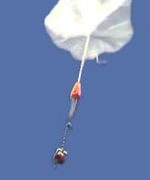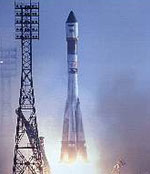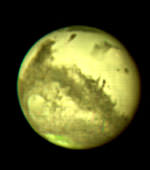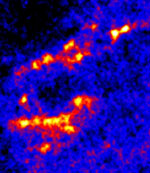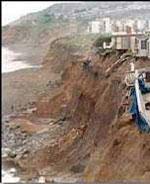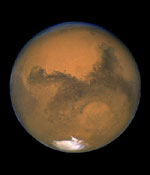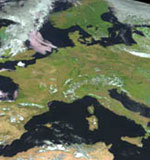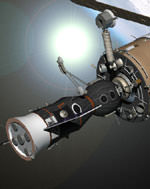
Image credit: NASA
The Russian Progress cargo ship launched last week caught up and docked with the International Space Station on Saturday. It delivered nearly three tons of food, fuel, water, supplies and scientific gear for the next crew to inhabit the station. The Progress 12 automatically linked up with the Zvezda Service Module at 0340 GMT (11:40 pm EDT Friday). Another Progress ship currently docked with the station will undock on Thursday to make room for the Soyuz that will launch with the Expedition 7 astronauts on October 20.
An unpiloted Russian resupply craft successfully docked to the International Space Station tonight, delivering nearly three tons of food, fuel, water, supplies and scientific gear to the Expedition 7 crew aboard the complex and for the next crew to launch in October.
The Progress 12 vehicle automatically linked up to the aft end of the Zvezda Service Module at 10:40 p.m. CDT (0340 GMT), two days after its launch from the Baikonur Cosmodrome in Kazakhstan. As the Progress neared the Space Station for docking, Expedition 7 Commander Yuri Malenchenko and NASA ISS Science Officer Ed Lu were inside Zvezda, monitoring its approach. At the time of contact and capture, the Station was flying over Central Asia at an altitude of 240 statute miles. After conducting leak checks to insure a tight seal between the Progress and the ISS, Malenchenko and Lu will open the hatch to the ship and then begin unloading the supplies.
Stowed in the Progress are replacement parts for Station systems, tools, a satellite telephone and Global Positioning System hardware, next generation laptop computers, educational demonstrations, science experiment gear and office supplies. The Progress also carried to the ISS science equipment for European Space Agency (ESA) Astronaut Pedro Duque of Spain, who is set to launch Oct. 18 from Baikonur on the Soyuz TMA-3 craft with Expedition 8 Commander Mike Foale and Expedition 8 Soyuz Commander and Flight Engineer Alexander Kaleri. Duque will spend eight days aboard the Space Station conducting science experiments under a commercial contract between ESA and the Russian Aviation and Space Agency. Duque will return to Earth on Oct. 28 with Malenchenko and Lu.
The new Progress also carries personal items and hardware for Foale and Kaleri, who are scheduled to spend almost 200 days aboard the ISS.
Another Progress vehicle currently docked to the Pirs Docking Compartment will undock from the ISS on Sept. 4, to clear the way for the arrival of Foale, Kaleri and Duque in the Soyuz TMA-3 on Oct. 20.
Information on the crew’s activities aboard the Space Station, future launch dates, as well as Station sighting opportunities from anywhere on the Earth, is available on the Internet at:
http://spaceflight.nasa.gov/
Details on Station science operations can be found on an Internet site administered by the Payload Operations Center at NASA’s Marshall Space Flight Center in Huntsville, Ala., at:
http://scipoc.msfc.nasa.gov/
The next ISS status report will be issued on Friday, Sept. 5, or earlier, if events warrant
Original Source: NASA Status Report

